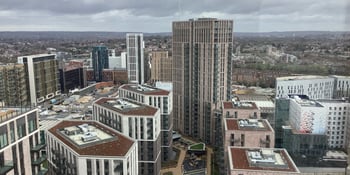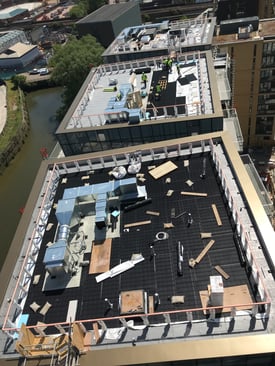 Testing and maintenance of life safety installations in multi-storey residential buildings is mandatory under the Regulatory Reform (Fire Safety) Order and is one of the most important aspects of facilities management. Since Covid-19 has become a global concern and forcing people to spend more time at home, it has become more important than ever that people are kept safe in their apartments.
Testing and maintenance of life safety installations in multi-storey residential buildings is mandatory under the Regulatory Reform (Fire Safety) Order and is one of the most important aspects of facilities management. Since Covid-19 has become a global concern and forcing people to spend more time at home, it has become more important than ever that people are kept safe in their apartments.
Why smoke control is important in multi-storey residential buildings
 Properly functioning smoke control systems are essential in multi-storey residential buildings because they serve an essential safety function – they are one of the key components of a well-designed fire safety system that helps save lives. Below are some of the main reasons to provide smoke control in multi-storey buildings:
Properly functioning smoke control systems are essential in multi-storey residential buildings because they serve an essential safety function – they are one of the key components of a well-designed fire safety system that helps save lives. Below are some of the main reasons to provide smoke control in multi-storey buildings:
- In multi-storey apartment buildings, the main escape route is always via common corridors and/or lobbies to protected stairs.
- Smoke can easily spread from an apartment if a door is left open for even a short period of time - it can quickly fill a corridor or lobby, making escape difficult and dangerous for occupants.
- Smoke entering the stairs can also make escape difficult for occupants of higher storeys.
- The impact of being faced with a smoke affected corridor or staircase can be disorientating, causing panic and confusion
- The fire and rescue services need clear access to stairs and lobbies to form a bridgehead for operations. In buildings over 18m this will be by a firefighting shaft which is required to be protected from smoke.
Maintenance frequencies are specified under BS 9999 for smoke control systems. It is recommended that systems should be tested weekly and maintained annually as a minimum. Unfortunately, due to the ongoing uncertainty that the pandemic is causing, many building owners and managers are paring back their maintenance regimes to reactive maintenance only, i.e. repairing systems only once a fault is apparent - this is putting lives at risk. The problem is, life safety systems often lie dormant in a state of readiness for when needed, so faults and failures often go undetected for some time or until an emergency occurs, when it may well be too late.
Furthermore, if a fault occurs and a system has reduced performance or is inoperable, mitigating provisions will have to be put in place to offset the risk in the event of a fire. These might range from employing a waking watch for the building, to a worst-case total decant of the residents to alternative locations. A fire engineering consultant may be required to advise on this.
The best way to avoid this is to continue with planned maintenance, make sure all systems are operating effectively and keeping buildings as safe as they always should be.
If you own or manage a residential development and would like to know that your systems are safe and operational, get in touch with our Service team to arrange a free building survey and consultation.
